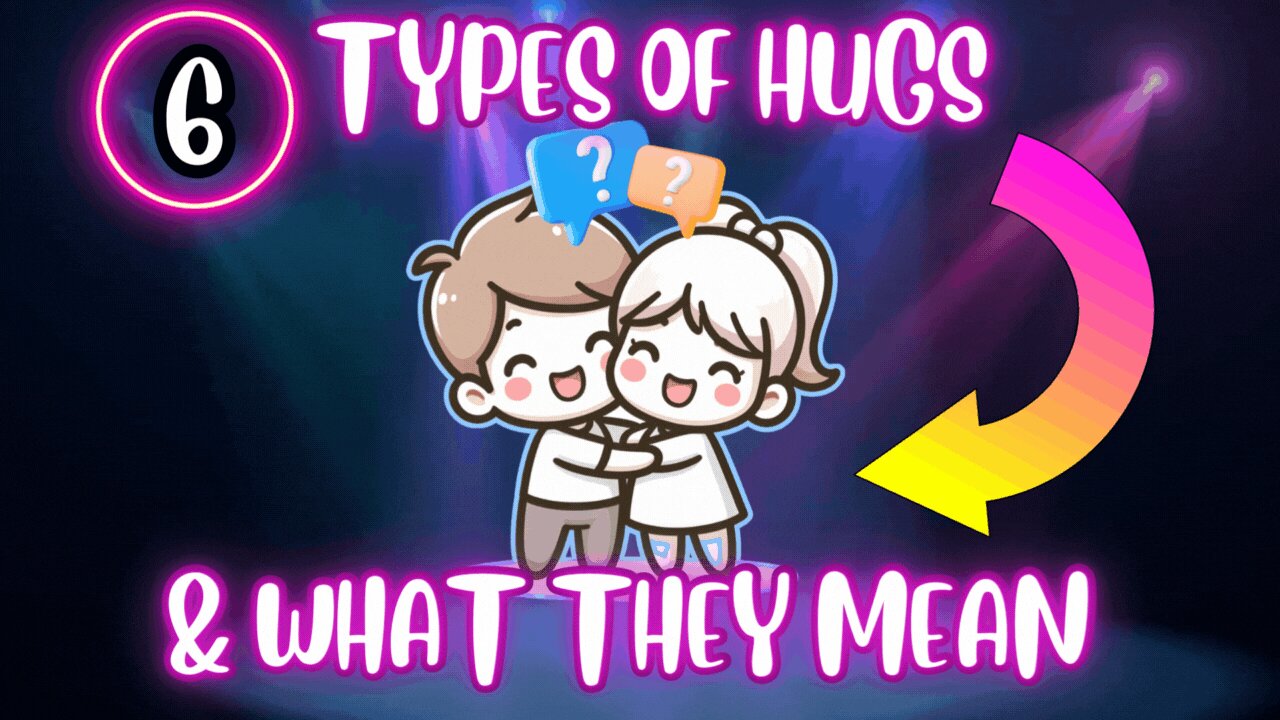Premium Only Content

Unlock 6 Secrets of Hugs! And What They Actually Mean @Elevate-Psychology
🤗 Unlock the Secrets of Hugs! Join Us at @Elevate-Psychology
🎥 Discover the intriguing world of human connection in our latest video - "6 Types of Hugs and What They Actually Mean." Hugs go beyond mere physical gestures; they are a unique form of communication. Delve into the nuances of human connection as we explore the meanings behind different types of hugs!
🔍 Key Insights:
1. 💑 Explore Romantic Hugs
2. 🤗 Decode Comfort Hugs
3. 🤝 Unravel Friendship Hugs
4. 🌈 Understand Empathetic Hugs
5. 🙏 Delve into Consoling Hugs
6. 🤔 Learn about Awkward Hugs
📖 Decoding Body Language: Did you know that the way we hug someone communicates volumes about our emotions and relationships? From the tightness of the embrace to the duration of the hug, every nuance reveals something special. Join us as we decipher the silent language of hugs.
🚀 Why Watch?
• 🧠 Gain Insights into Non-Verbal Communication
• 🤓 Understand the Psychology Behind Hugging
• 🌟 Improve Your Connection Skills
📌 Connect with @Elevate-Psychology:
• 📲 Follow for More: [Subscription Link]
• 🌐 Visit Our Website: [YourWebsite.com]
• 💬 Join the Conversation: #HugMeanings
🔗 Helpful Links:
• [https://bit.ly/ElevatePsychology]
• [ https://bit.ly/Elevate-Psychology]
🔍 #Elevate-Psychology #HugMeanings #BodyLanguageExplained #ConnectionPsychology #NonVerbalCommunication #SubscribeNow
🙏 Thanks for embracing knowledge with us! If you find the world of hugs intriguing, hit like, share, and subscribe for more mind-expanding content. Let's foster a community of understanding and connection!
7. References:
8.
9. Adriansyah, M. A., Sugandi, L. S., & Prastika, N. D. (2018). The Effectiveness of Hugging in Reducing Depression and the Feeling of Powerlessness in the Affected Adolescents. In Mid-International Conference on Public Health (pp. 258-258).
10. Enriquez, N. E. (2008). Hugs and smiles: Demonstrating caring in a multicultural early childhood classroom. Early Child Development and Care, 174(6), 539-548.
-
 LIVE
LIVE
Badlands Media
9 hours agoBadlands Daily: July 30, 2025
3,682 watching -
 LIVE
LIVE
Matt Kohrs
10 hours agoHappy Fed Decision Day!!! || Live Trading
727 watching -
 59:26
59:26
Part Of The Problem
12 hours agoDave Smith | War Without Propaganda | Part Of The Problem 1291
4.34K4 -
 LIVE
LIVE
Wendy Bell Radio
7 hours ago2 Minutes And 17 Seconds
8,163 watching -
 LIVE
LIVE
LFA TV
14 hours agoLFA TV ALL DAY STREAM - WEDNESDAY 7/30/25
4,270 watching -
 LIVE
LIVE
JuicyJohns
2 hours ago $1.39 earned🟢#1 REBIRTH PLAYER 10.2+ KD🟢$500 GIVEAWAY
126 watching -
 53:02
53:02
The Official Corbett Report Rumble Channel
14 hours agoHow to Leave the Cage - #SolutionsWatch
4.83K2 -
 42:47
42:47
Outspoken with Dr. Naomi Wolf
17 hours ago"Jonathan Pollard: Are Allies of Israel being Targeted?"
12.5K4 -
 1:29:49
1:29:49
Game On!
18 hours ago $1.89 earned10,000 Followers Celebration Stream! Let's Talk Sports!
43K2 -
 15:38
15:38
SKAP ATTACK
20 hours ago $3.03 earnedA Legacy Tainted: Unpacking the LeBron Steroid Rumors
42.5K13